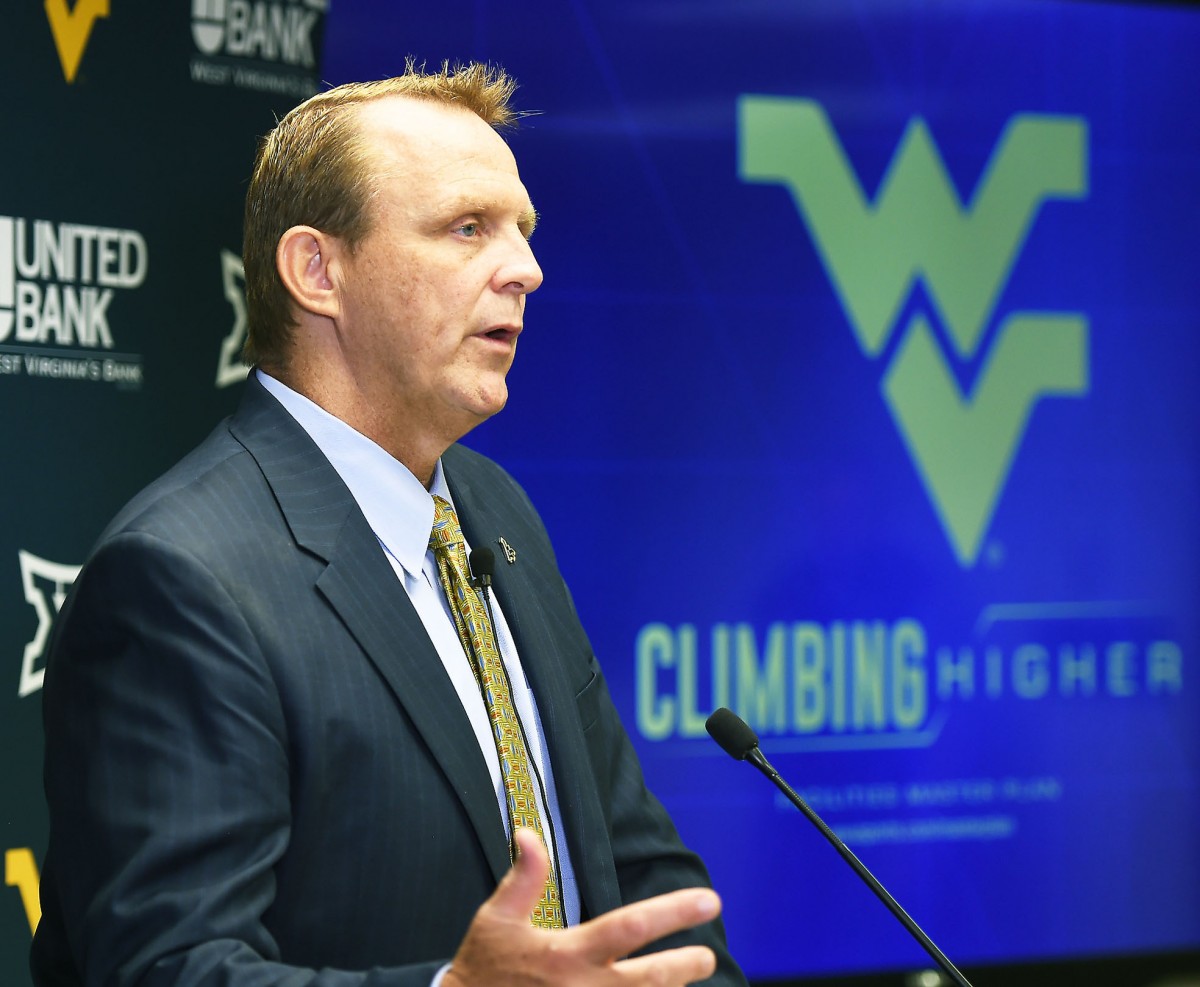Another phase of renderings foretelling renovations. Another push for massive fundraising. Only the push never takes a timeout.
West Virginia’s climb into a Power Five conference certainly generated piles of new revenue. That also raised the neighborhood standards by which its facilities are measured. Having enviously inspected other Big 12 campuses, WVU athletics director Shane Lyons holds no delusions about the shortfalls in Morgantown.
“To be completely candid, our facilities are probably 10th in the league from a football operations standpoint,” he said. “No one wants to be last.”
More than half of the $100 million master plan Lyons unveiled Thursday targets the Puskar Center complex at the stadium. The new video board and widened concourses of recent years were fan-facing upgrades; now comes the sprucing up of areas most crucial to recruits. Adding 5,000-square feet to a splashy new locker room. Updated meeting spaces for position groups. A larger academic center. Remodeled coaching offices. A hydrotherapy center complete with waterfall.
“These are not wants, these are needs,” Lyons said. “We’re not doing anything exorbitant.”
OK, so that waterfall leans toward exorbitant, but Alabama’s therapy pool actually contains four of them. And Clemson football redefined exorbitant by including a miniature golf course, whiffle ball field and a two-story playground slide — a clincher for recruiting five-star linebackers who get claustrophobic in elevators.
So that’s the context for Lyons saying, “If you look nationally at what’s happening out there, we’re getting way behind.”
Olympic sports will enjoy a modernized weight room. The Shell Building will be remodeled for the first time since opening three decades ago. There’s a new six-hole course for the golf team planned for Exit 146 on I-79, with heated bays for practicing tee shots in the gray dead of winter. The old baby-blue track adjacent to the Coliseum will be replaced by 500 sorely needed parking spaces.
“If we don’t have construction going on and moving forward, then we’re going backward,” Lyons said.
Inside the WVU Coliseum, those plastic seats that make you nostalgic for 1970 and child-sized hips will be replaced, finally. There’s also an updated high-definition video board coming above midcourt to replace the current one that seemingly relies on rabbit ears.
The sequencing of these projects “depends on the wishes of the donors,” Lyons said.
In search of revenue streams, the university is open to selling the naming rights for the WVU Coliseum, Lyons told me. Consultants have evaluated the market value, and it’s foreseeable a company wiling to make the 10- to 15-year commitment could add its name to the building for more than $1 million annually.
What’s not foreseeable?
Building a new football stadium, which would cost $400 million, or constructing a new basketball arena, which would require $230 million.
“It’s just not financially feasible,” insists Lyons, who fully expects rumors of both mega-projects to keep swirling nonetheless. “There are no plans to build a new stadium, but even when I tell people that they say ‘You’re lying to me.’”
There also are no plans for a copying Clemson’s indoor slide. Guess the Mountaineers will have to be content with sledding down Law School Hill.




